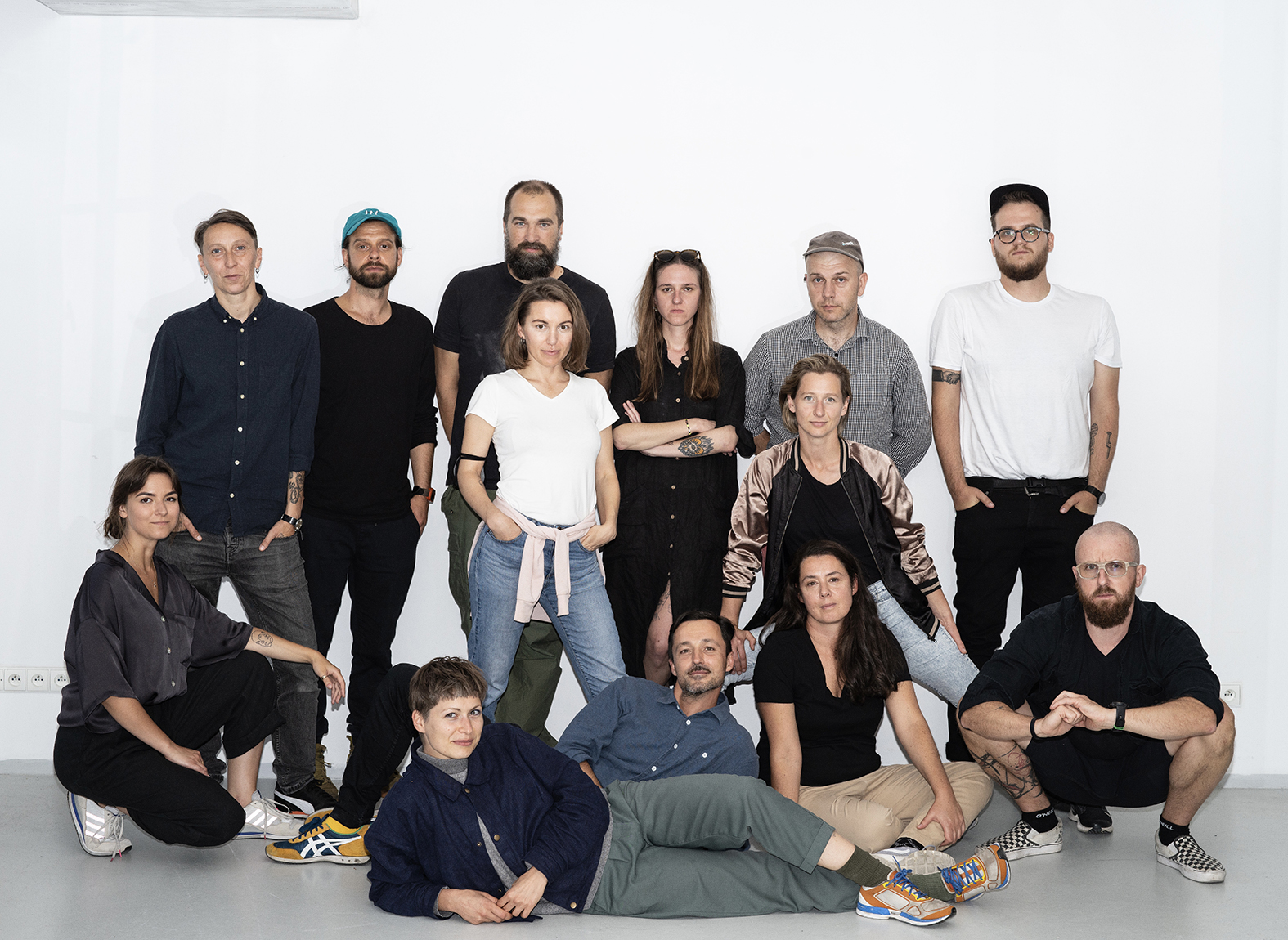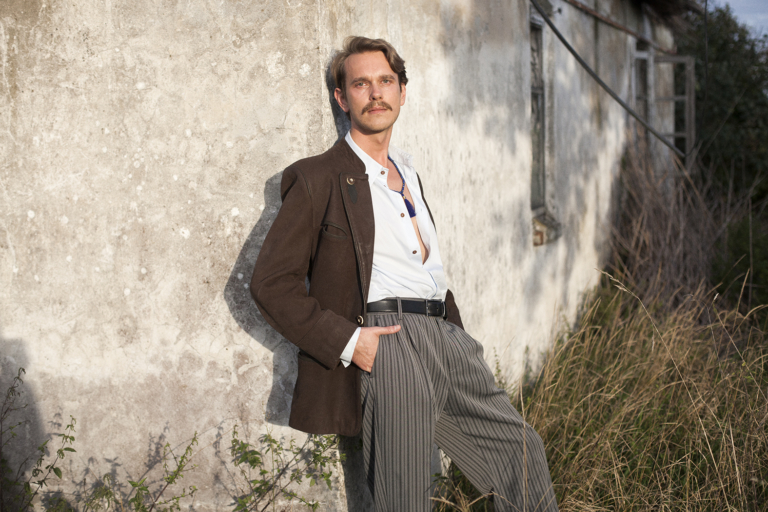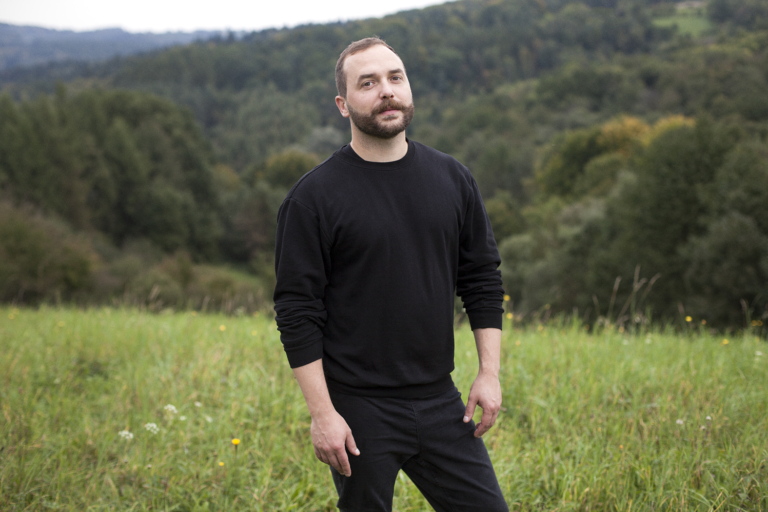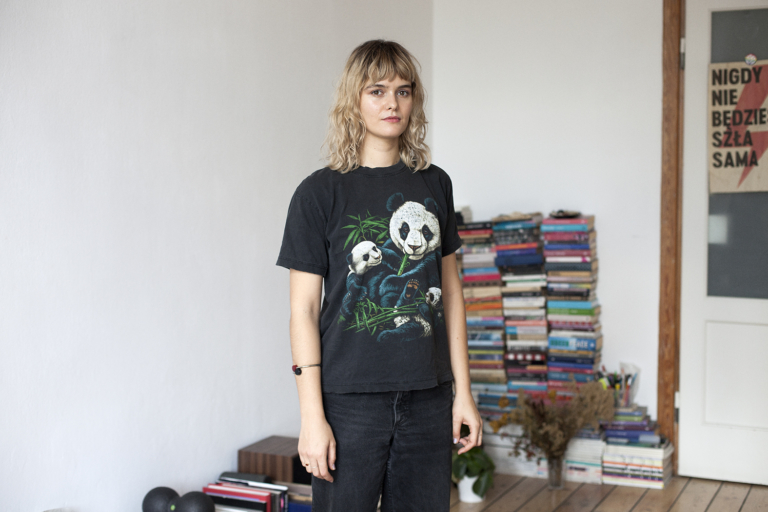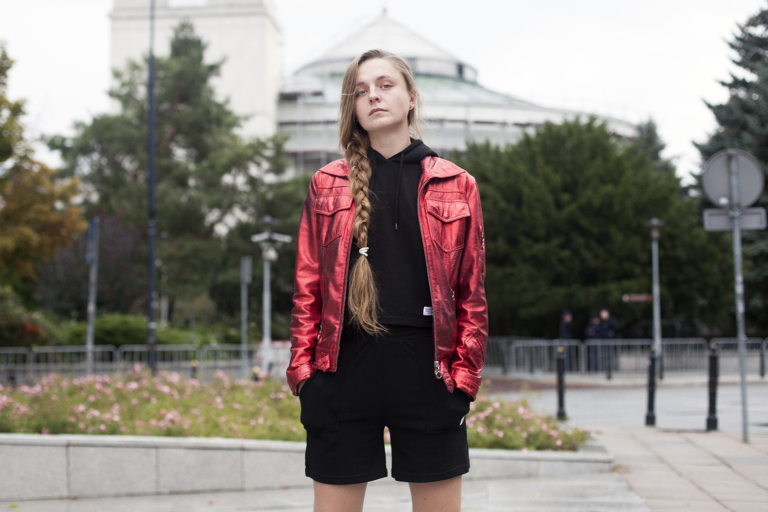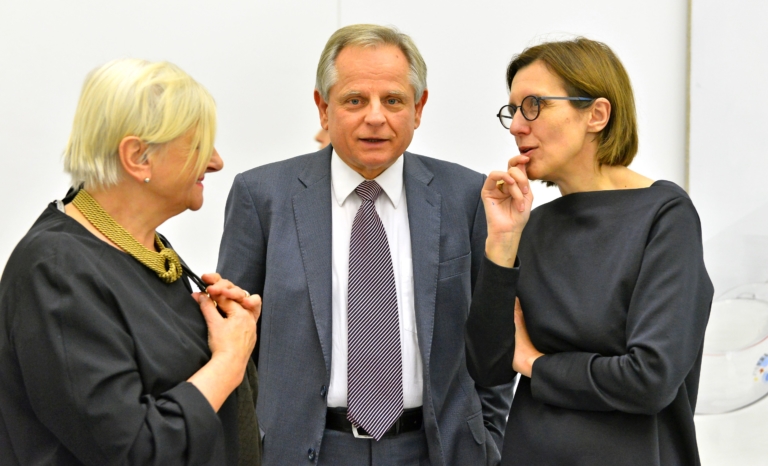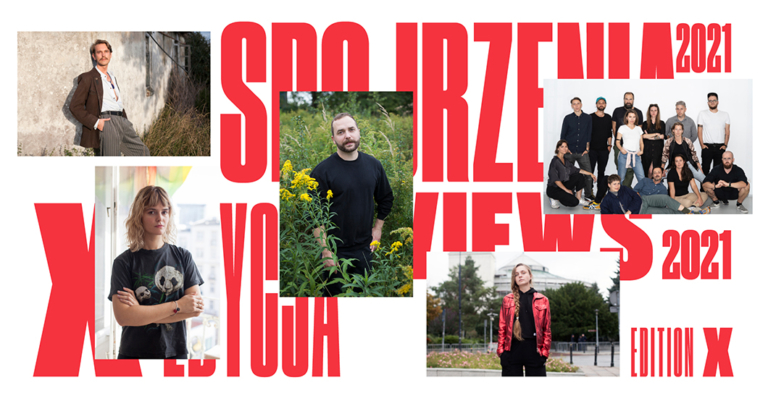No. 33
Archive of Public Protests (A-P-P): The Protest Is Visual
Michał Adamski, Karolina Gembara, Agata Kubis, Michalina Kuczyńska and Rafał Milach in interview with Dorota Borodaj
Dorota Borodaj: You didn’t know right away how the Archive of Public Protests would develop. Today, it is a website with thousands of photos and a collection of texts, it is a Strike Newspaper, but also a space to discuss how image can enhance action, how it can boost and spread the message that people take to the streets with. What was it like at the beginning? Did you take to the streets as photographers or as activists?
Michalina Kuczyńska: I understood pretty quickly that my presence with a camera at protests was also a form of participation. I don’t call myself an activist, but I feel that the photographs we take at A-P-P bring me closer to activism. Someone said that they are the materialisation of activist action, and I strongly identify with this. From the very beginning, the camera was my link to what was happening on the street.
Rafał Milach: I was led to the protests by civic compulsion, not a photographic one. Reaching for the camera was natural, but it didn’t happen right away.
Agata Kubis: For me, the street is a natural environment, I have been photographing it for ten years, it was my school.
Michał Adamski: From the very beginning, I documented the protests in Poznań, I uploaded my photos online and this is how Rafał came across them and invited me to A-P-P. But this whole time, I identify more with photography than with activism. I feel the need to record what is happening in my city, but I also often identify with the demands and protests. A-P-P accommodates all our photographic identities.
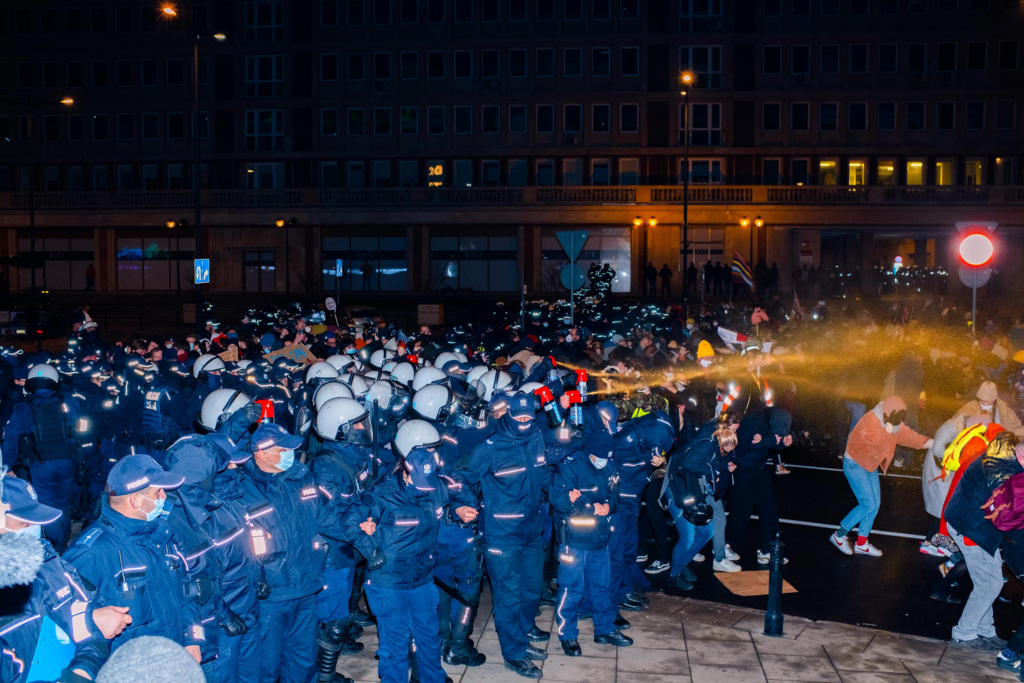
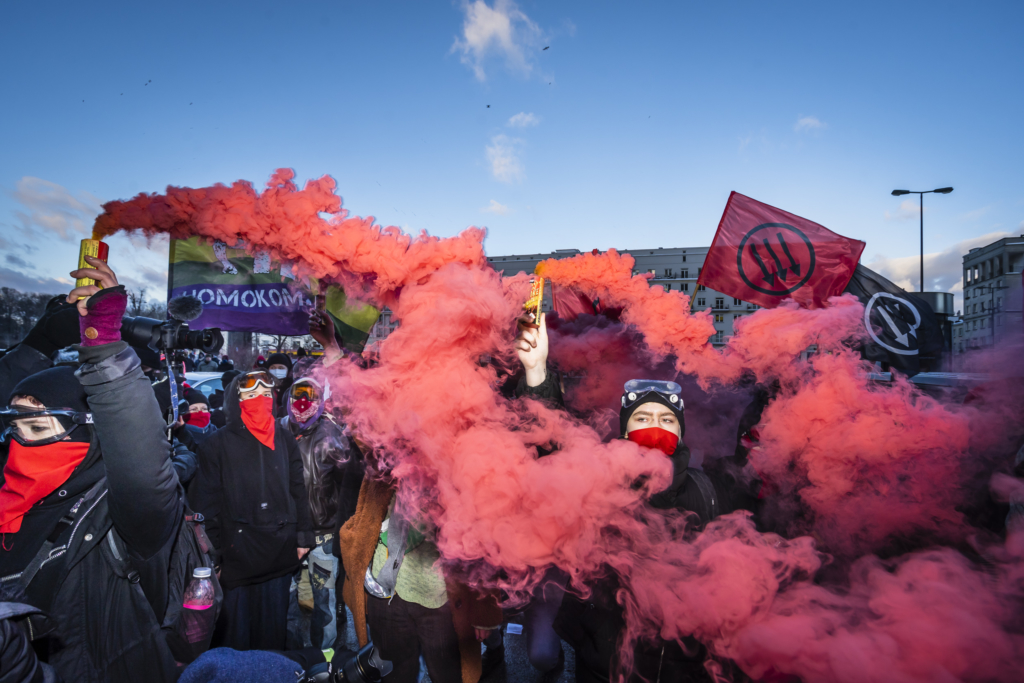
There are at least a few of those. There are photojournalists working for press agencies among you, people who have been focusing on long-term, original projects, you have different backgrounds and experiences. Does A-P-P change your way of working, influence how you take photographs?
AK: The collective gave me the freedom to talk about what happens at demonstrations. When I do commissioned material, I have to think strategically: take wide shots to show the context of the situation, to tell the story more linearly. When I take photographs for A-P-P, I can experiment, I have more freedom and leeway.
MA: I am a documentary photographer, in my work, I focus more on long-term projects. This determines a very different thinking from that at the protests. In my original projects, I focus on building a narrative. On the other hand — I developed my skills in street photography, but I did it more for my own use.
RM: Over the last few years, I have gradually moved away from reportage photography to work mainly in the field of art. I worked on a project basis — first I had to think about something, read about it, then grab a camera, and finish with a book and an exhibition. During the protests, I started to work in a completely different way. Faster, but also without external pressure. If I felt any, it was self-imposed. I also started photographing people, which I hadn’t done for years. For me, A-P-P meant going back to my roots, and it is if not the most important, then by far the most useful thing I have done in my professional life.
MA: We at A-P-P have a variety of experiences as photographers. It is interesting that we are able to come together and connect in this diversity. We combine the potential of photography, activism, art, photojournalism and send a strong, consistent message to the world. I identify with it.
Karolina, you are a photographer, but you have taken on a different role in the A-P-P.
Karolina Gembara: I never worked as a photojournalist, I devoted myself to projects that spoke in a more metaphorical way about things that were important to me from a social or political point of view. I also used photography as an excuse to meet with people and do things together. At A-P-P I write, edit and check how our postulates resonate in different fields: social, research, artistic and political. This coincided with my work on my PhD, which is devoted to the agency of photography in the context of the protests in Poland. I am exploring a phenomenon that emerged after 2015 and that still has not received comprehensive studies. But it is not the only one. Photography continues to be treated in a neglected way, worse than other visual arts.
How does this manifest itself?
KG: In a certain gap, a lack of willingness to name new phenomena in photography. We see this especially at Sputnik Photos, of which I am a member. It is very rare to find interesting, critical texts on photographic projects. We feel that we often have to persuade ourselves and our audience to start a discussion, to create the space for it ourselves, rather than waiting for journalists or critics to do it. This is what is happening now when we consider where the images that feed A-P-P are placed in the context of, for example, critical art or activism. We decided to write down our own thoughts as we worked. This is one of the purposes of the texts published on the Archive of Public Protests website.
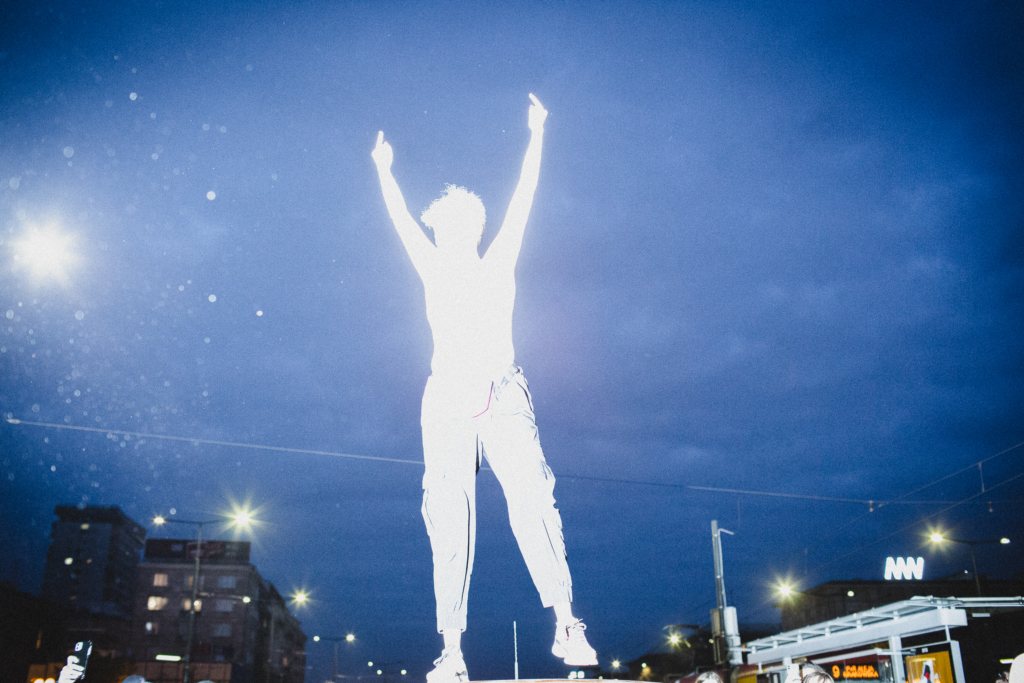
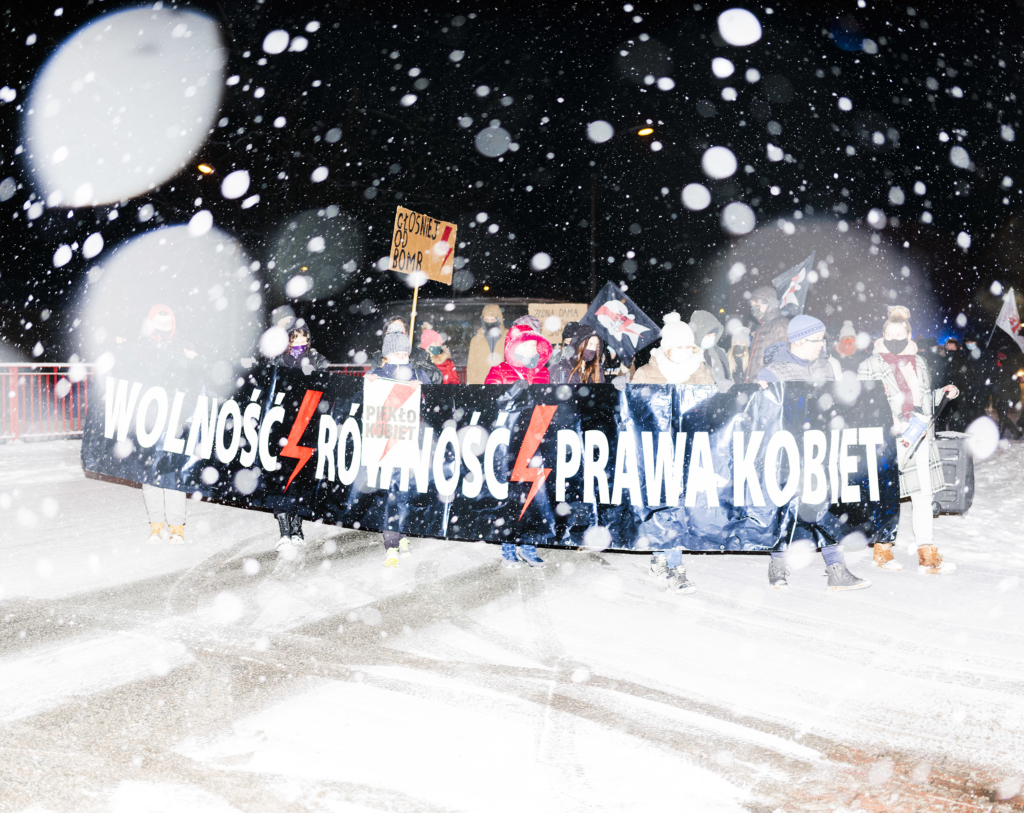
And how do you function in the photographic community?
AK: I have the impression that we are like a cat among the pigeons. I’ve been told that I should hand in my press card because what we do has little to do with photojournalism. The reason? Because it is not ‘objective’. But what does that mean? How am I supposed to be objective, if only as a woman and as a lesbian — and therefore a person directly affected by the majority of the demands at the protests? We have been clear from the beginning: we are also taking to the streets because we identify with the demands of the protesters. That is why we turn our lenses in this direction. I will not pretend that the subject I photograph does not concern me personally.
RM: The Archive of Public Protests is there to be drawn from and used. It does not objectify reality but builds a concrete message. That is why, for example, we do not create a platform for protests with which we do not identify.
AK: A-P-P gives me the space to go back to the origins of photography. I see how our photographs fuel the demonstrations. Their form — sometimes poster-like, sometimes cartoonish — has enormous potential to make the message of the protests even clearer. Therein lies the point of A-P-P — the photographs do not so much describe or document the demonstrations as enhance and fuel them.
The performative potential of photography is a topic both widely discussed and unresolved.
RM: I don’t avoid it — before the Archive of Public Protests came into being, I had a growing conviction that photography was an imperfect and ineffective medium. Despite the social and political dimension of my earlier projects, I felt that I was moving in a rather narrow niche that did not create a sense of change. A-P-P turned it all upside down. Everything we do together is geared towards change — to record the energy of the street, to create a repository, to stimulate the fact that photographs reinforce the message of activists, to ensure that the photos are used, performed and treated as a tool for this change.
KG: Thanks to the Strike Newspaper, people at protests can use our photos like banners, we give them back to them in a literal sense. But we also appear in various opinion-forming publications, photography festivals and art galleries. One of the reasons for this is that we ourselves connect these different worlds. And broadening our reach is much needed for the causes we fight for by coming to the protests.
AK: I had a moment when I didn’t feel that agency in press or reportage photography. I’ve regained it thanks to the A-P-P.
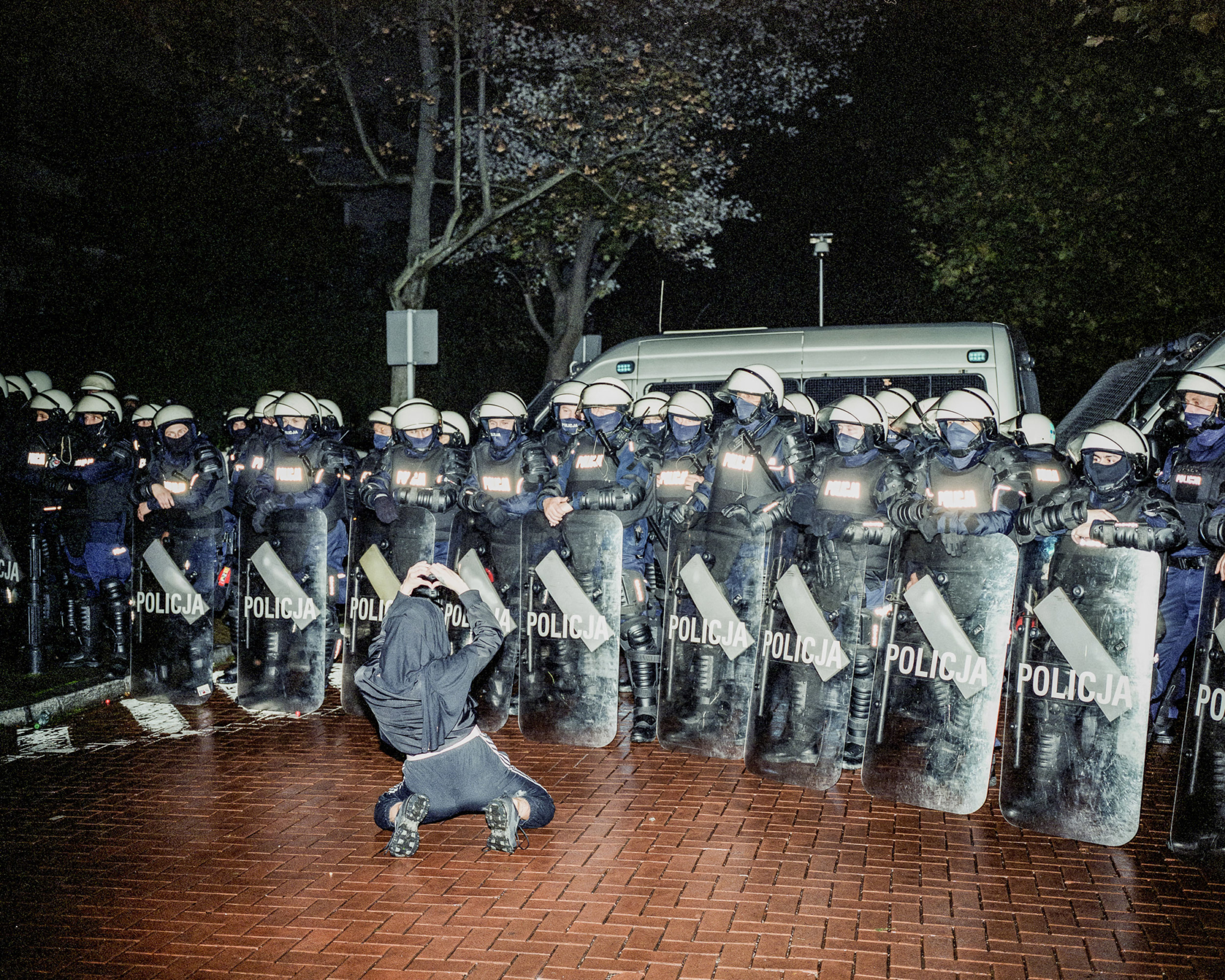
There are pictures that have already become symbols of the protests.
RM: I watch with curiosity to see how they are used. And how they bring change — this is what happened, for example, with my photo of Bianca Nwolisa carrying the banner reading ‘Stop calling me Murzyn’. This photograph works because it is first and foremost about words that postulate on a very specific issue, although visually I do not find this photograph outstanding. However, it has the power to make a difference — reaching out to discuss the language of hate and contempt, as the Afropolki Collective did #dontcallmemurzyn. This is one of the photos that restored my faith in the agency of image. The stories I told earlier were quite limited in scope. Now our images are designed to enter into coalition with various actors, to provoke both discussion and action. And this is happening — in Poland and abroad.
AK: Sometimes I walk down the street and I see pages from our newspaper in the windows, I know places where whole walls are wallpapered with them. People use it at protests, and a school newspaper with extracts from it has also been created. The secondary circulation of the photographs is just as important to us as the photos themselves.
How else does this agency manifest itself?
MK: Sometimes our presence gives a sense of empowerment to people protesting in smaller towns. But Warsaw is different from smaller towns — crowds come to the protests, including photographers. And in a small town where maybe a few dozen people are protesting, our photos give people the feeling that their presence also counts. This was the case recently during a very small protest outside the Border Guard building in Ruda Śląska. A few adults and children came, but thanks to the fact that the local media and someone with a camera turned up, their coverage was able to reach well beyond the area where the protest was taking place. This is also a very important role of the A-P-P.
KG: The protest is a very visual phenomenon, and we have the impression that it is not only the photographers who understand this well, but also the protesters themselves. A protest needs to be visible; over these past few years we have learnt how to work visually to reinforce its demands.
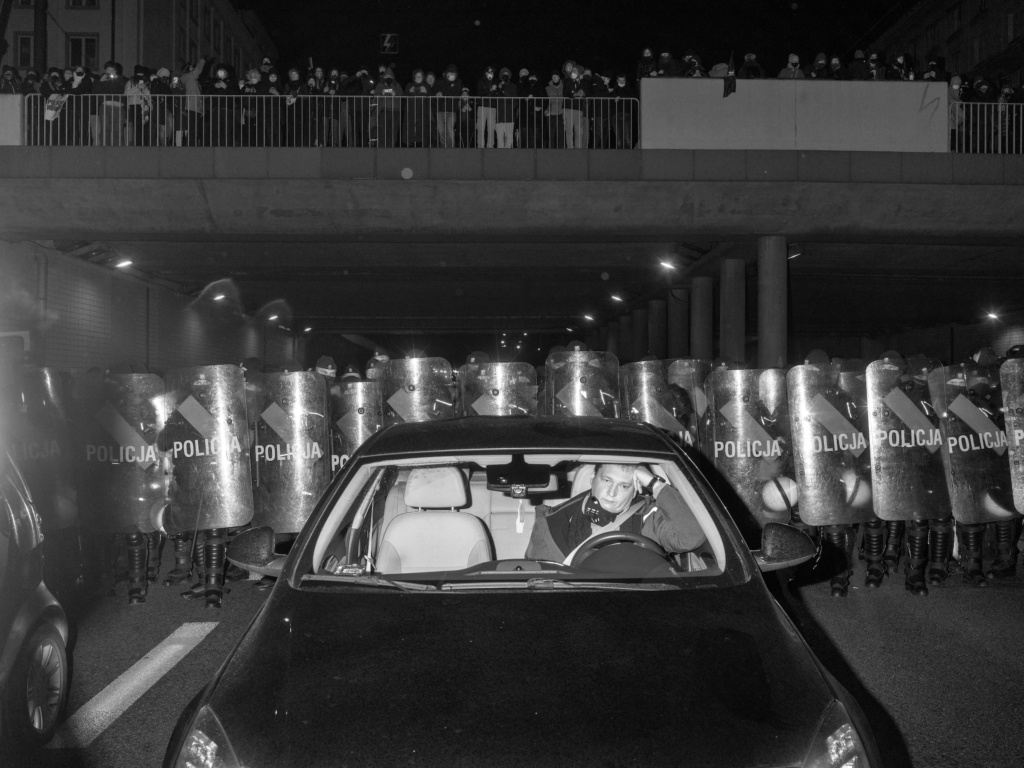
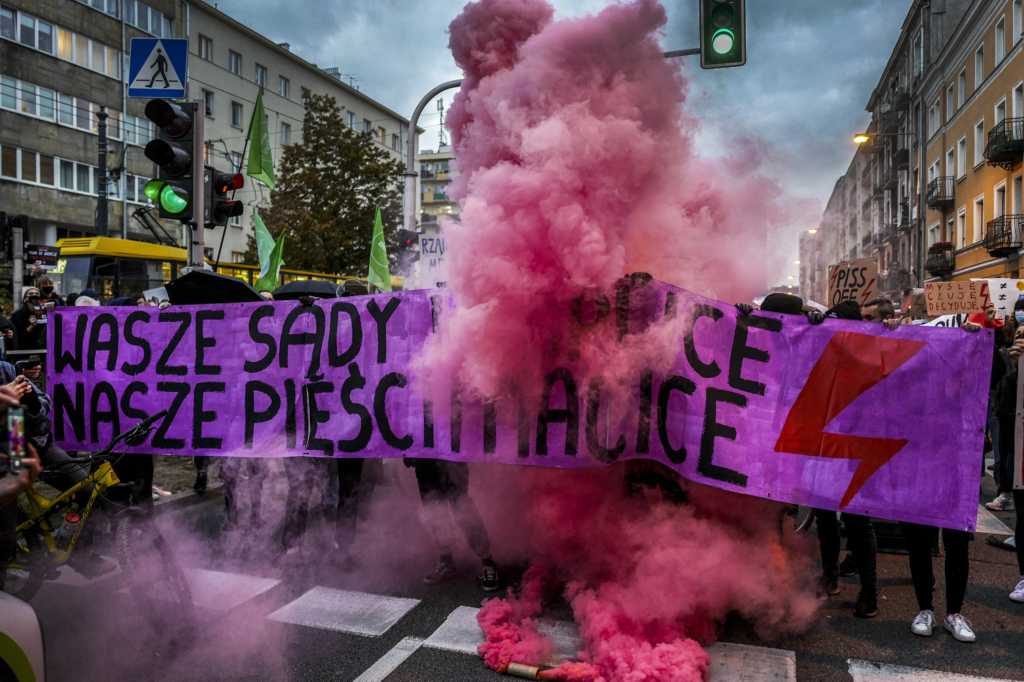
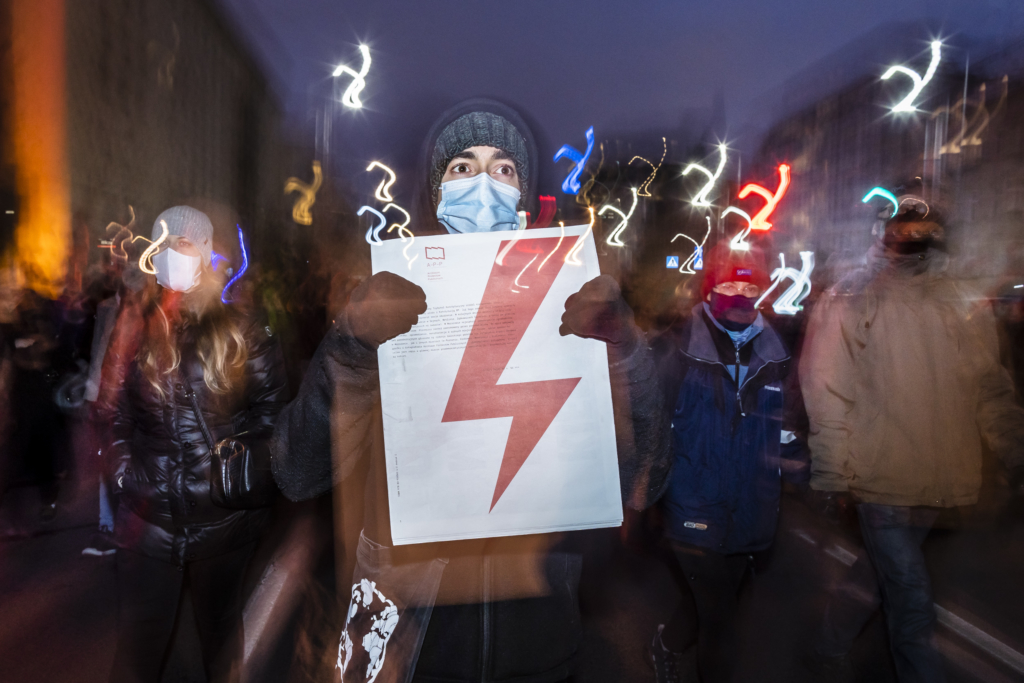
Tell us a bit about these peripheries. The media mainly showed images of the metropolitan protests. In Warsaw, the visual representation of the demonstration was dominated by photographs showing police brutality. In the Archive of Public Protests, their context is supplemented by photos from other demonstrations.
MA: I take a lot of photographs in smaller towns around Poznań and in the Greater Poland region. At one point, what was happening there during the Women’s Strike was more interesting to me than the protests in the big cities. In my hometown of Luboń, nearly a thousand people took to the streets; it was an unprecedented movement. The presence of photographers in these smaller places and adding photos to the Archive showed the importance and the need for boosting these local voices. Taking to the streets in such a place often requires more determination and courage from people; it’s not easy to demonstrate one’s views in a small community. My presence gave them the feeling that their voice would go out into the world, that this courage would not disappear. In Warsaw, police officers used gas, force and violence, and at ‘my’ protests the organisers repeatedly thanked the police for their help in maintaining order and security during the demonstrations. This is also part of this broader narrative, and we would not want it to be suppressed.
MK: In Gliwice it was also more intimate, without such stories with the police, but also energetic. There were times when people were disappointed that there were so few of them. But from our point of view, every presence was and is important. These protests have simply had different dynamics, and change is also happening through these smaller initiatives. I realised that even small gestures matter, so I documented them.
RM: By acting independently, we can allow ourselves to move away somewhat from the centre of events and look its peripheries. That’s where the most interesting things often happen.
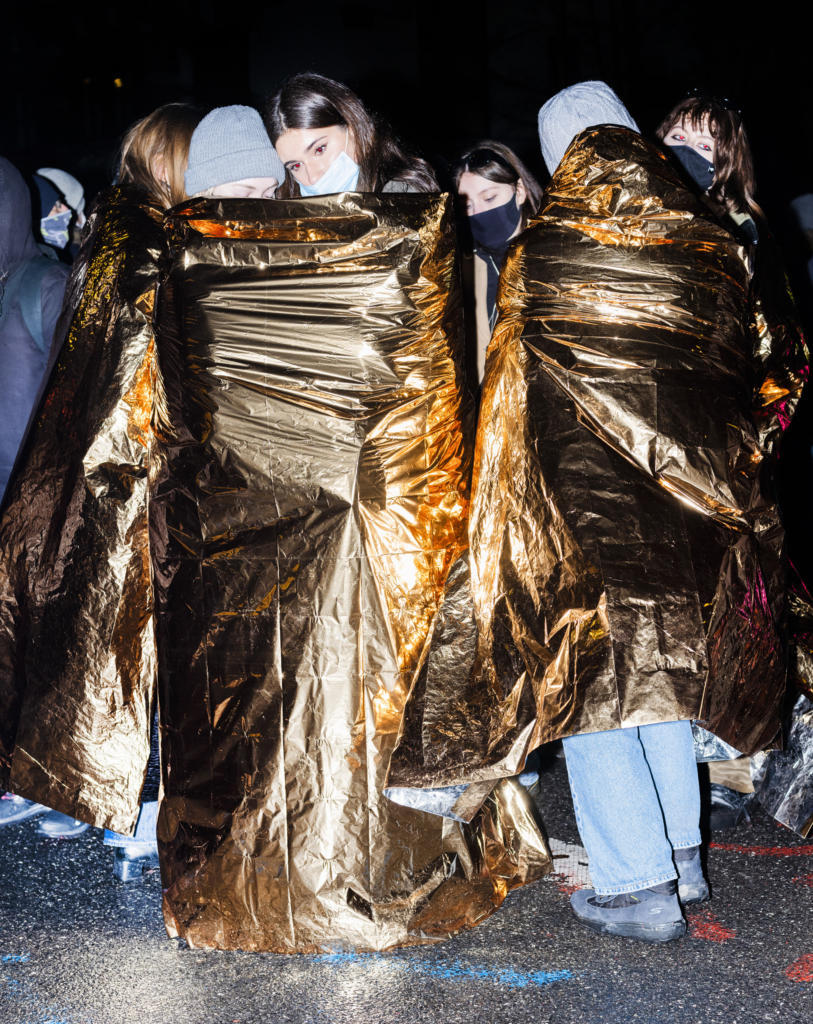
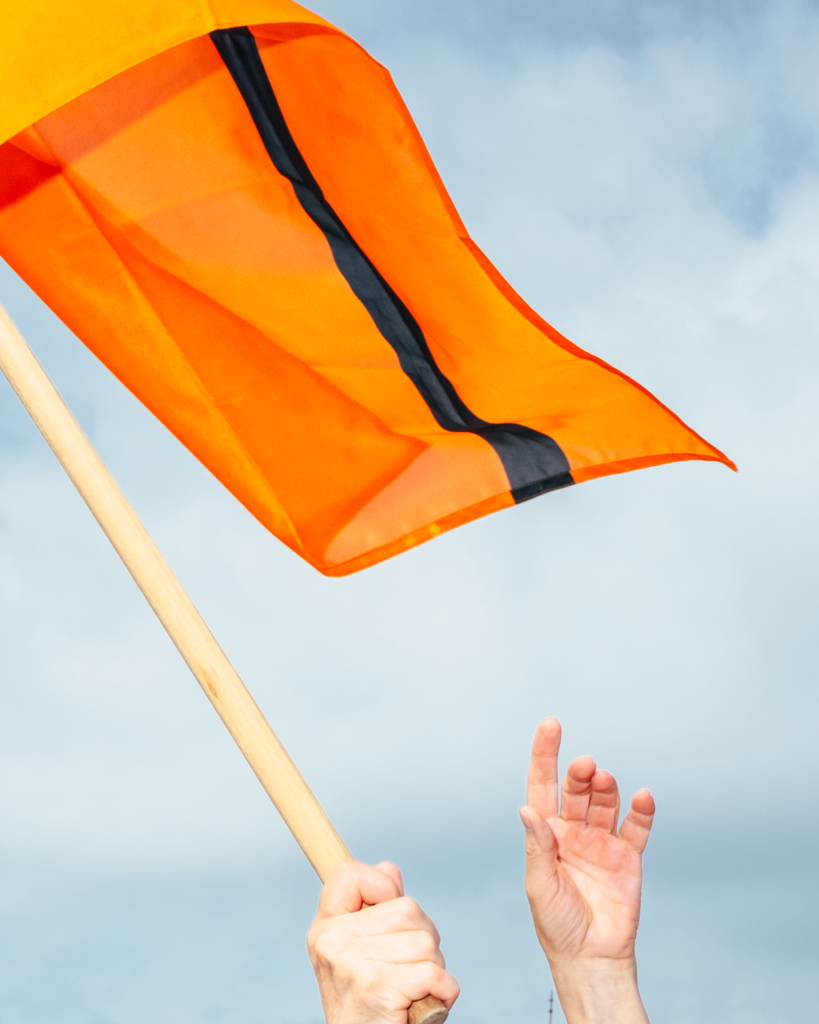
Activist burnout is increasingly talked about today — the burden of animating change but also of taking on the aggression or resentment of those on the other side of the barricade does not leave activist people unscathed. Does this subject concern you too?
AK: I had a moment like that. I would come to a demonstration and wanted to run away from it after an hour. You constantly had to be at the ready because something could happen right away. This feeling passed after a while, but now it has returned, when I was recently on the Polish-Belarusian border, where a week is like a year on the street. I went there as an activist. I have a camera with me, but with a few exceptions I don’t use it for professional purposes. Rather, I document situations and stories for aid organisations. And I myself help, too. I sometimes fear whether this experience and the subsequent intense protests will make me want to put the camera down completely for a while.
MA: Burnout in my case is perhaps too strong a word, but I certainly felt fatigue. I’ve been photographing protests since 2015 and what happened was that I lost my enthusiasm, I stopped seeing the important moments. I don’t think I knew how to photograph them for a while. The invitation to A-P-P motivated me to return to the documentation of protests. Here the movement was the opposite — the street gave me energy, acting in a collective — a fresh perspective.
MK: I work well under stress, I can stand eight hours on my feet, with a camera in my hand. But after something like that, the adrenaline just keeps flowing. There were times when I would come home in the evening and not be able to sleep for the next few hours. A collective helps a lot at times like this. We write to each other, we talk and we see that others are going through it, too. Sharing what is difficult also gives us a lot.
KG: As long as you have a task to complete, you may not feel anxious or tired. After a while, however, the discussions we have among ourselves are joined by voices of slight disappointment — for example, that there were no crowds at a particular protest, or that even mass participation did not bring about change. Despite these voices in our heads, I think we all understand that we can’t stop, because maybe these protests are resulting in something we don’t yet see. You can certainly see that recent years have seen a leap in social engagement. A new community is being built, which is very important, even if its foundation is anger and a sense of exhaustion.
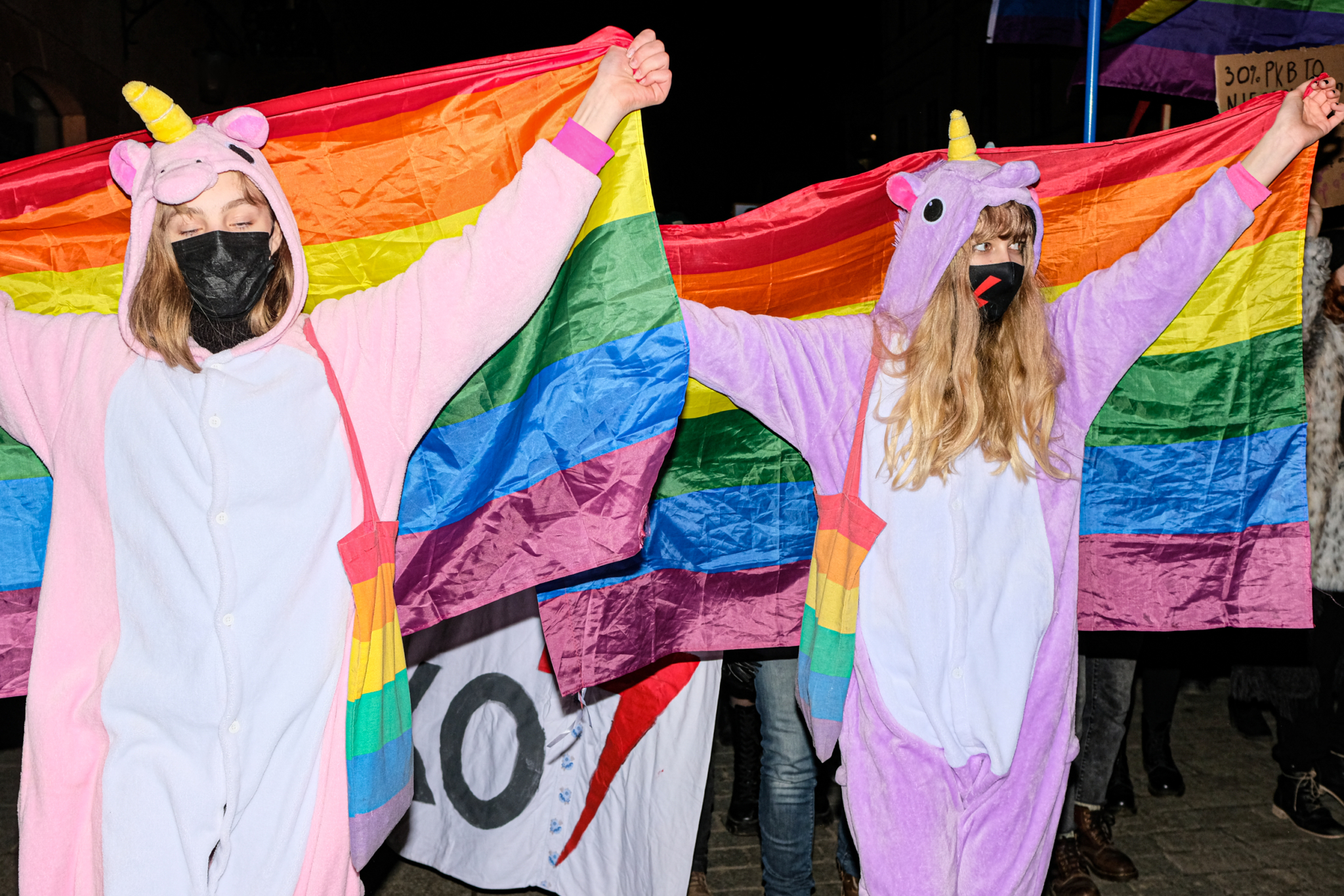
You mentioned the power of acting as a collective. How does this shared identity that we talked about at the beginning help you in your work?
AK: When the biggest protests were going on, we were constantly checking to see if each and every one of us was OK, where everyone was, if they were having trouble with anything. This gave us a sense of security. We could also afford to take a breather, at least here in Warsaw, where there are relatively many of us. The street sucks out your energy. It’s good to say to yourself sometimes: it’s ok, I don’t have to be everywhere. And give the same opportunity to other members of the collective when they need to take a break.
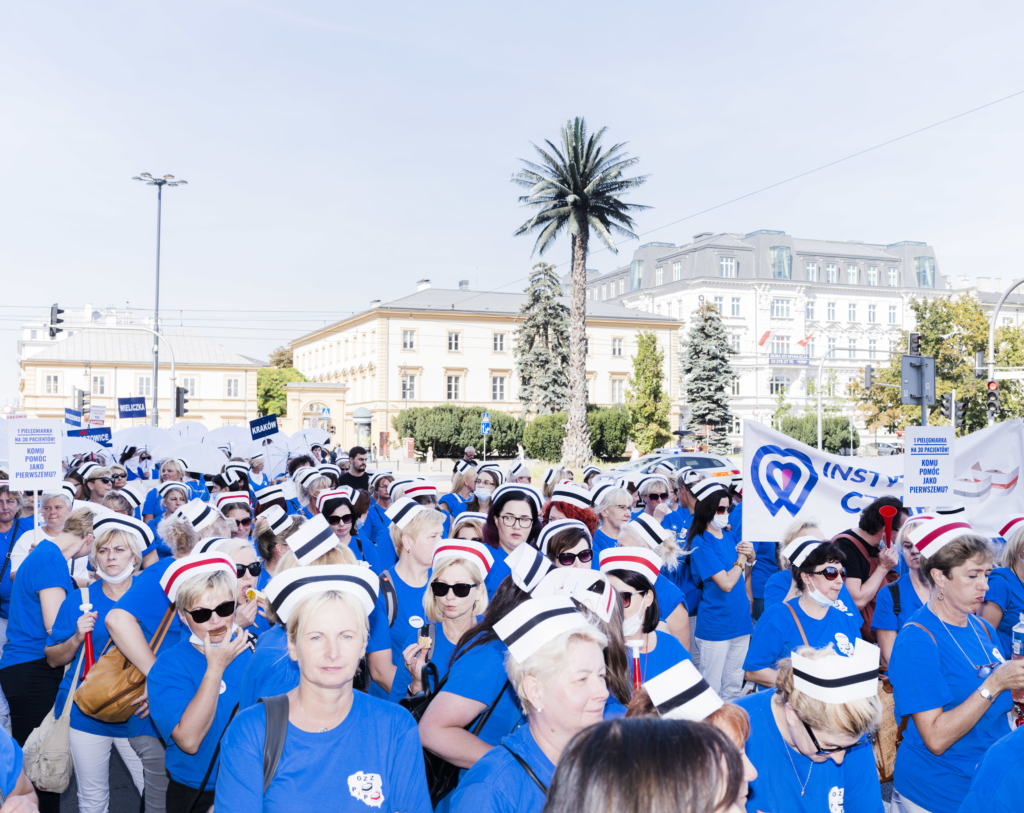
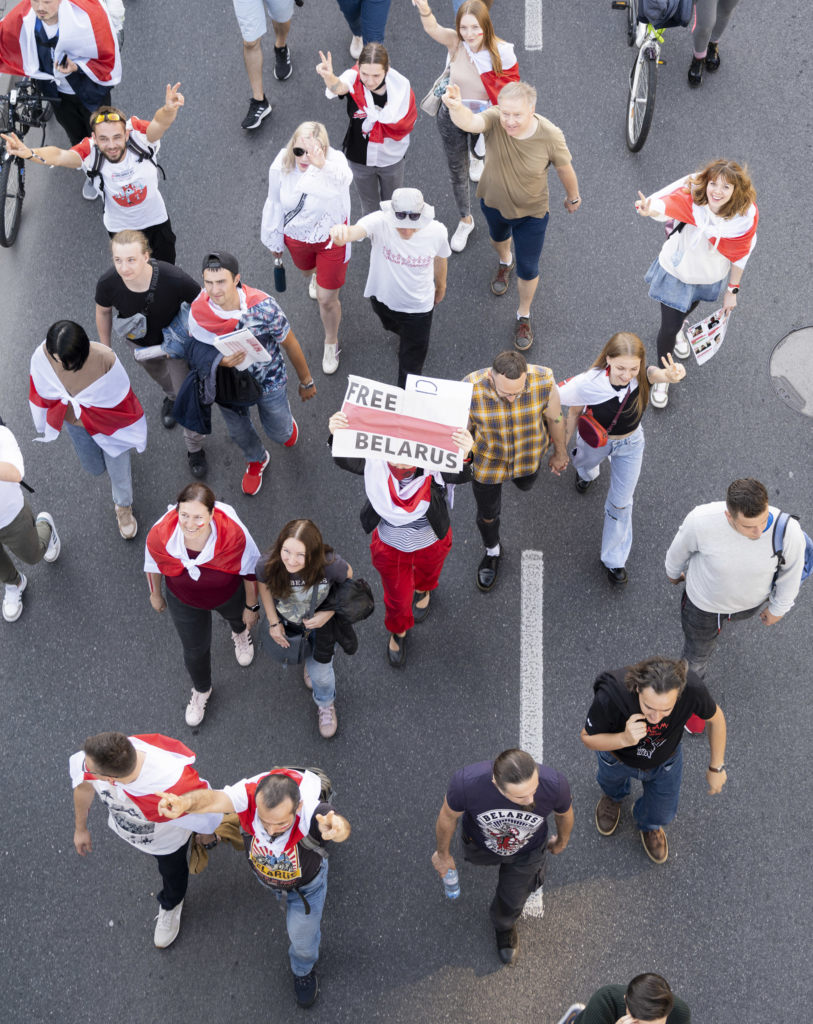
And competitiveness?
AK: There isn’t any between us. It is truly remarkable, after all, we are using the same tool. Instead, there is great attentiveness. I think this is because we are united by values, which are also the subject of the protests being photographed. It still surprises me how well we get along with each other, even though there are a dozen of us, and we mostly didn’t know each other before the Archive of Public Protests was set up.
RM: I feel a great responsibility for what we have brought to life. We have a certain duty. Activists do their work on the street, and we extend that, giving a platform and tools to make their demands resonate, live and have an impact off the street as well. This responsibility certainly comes with a burden. But on the other hand — we are in this together. We are creating a community and that is the remarkable success of this project. Competitiveness has been covered up by care.
KG: This concern also resounds in the stories we share after the protests. We talk about how we see them; we watch out for each other so that we don’t lose hope or enthusiasm for the work.
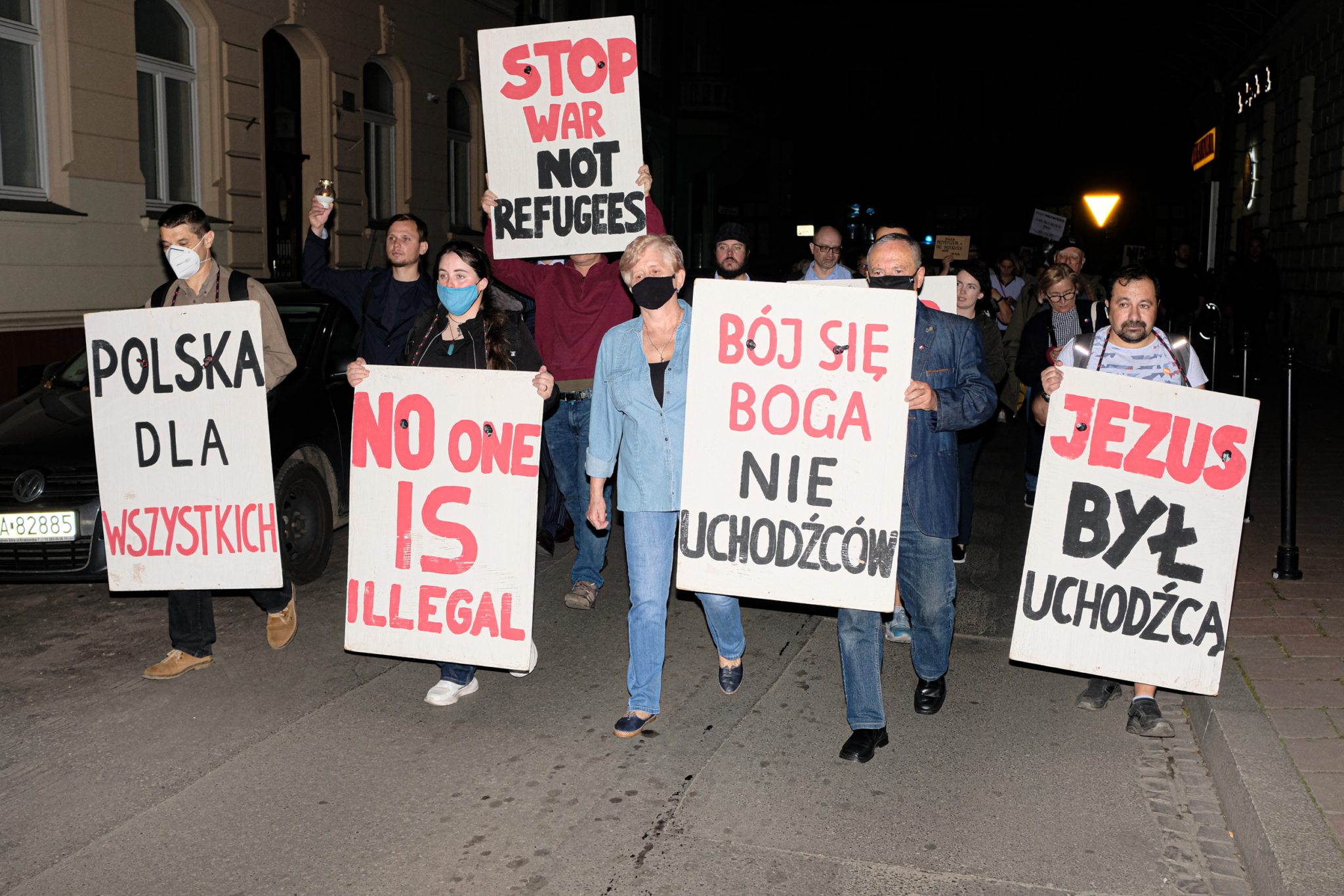
Dorota Borodaj — journalist, reporter, graduate of cultural studies, the Polish School of Reportage and the School of Ecopoetics in Reportage Institute. Member of the Krajobraz Sightseeing Society. Winner of the Grand Prix at the Sensitive Festival (2020). She has been published, among others, in Pismo. Magazyn Opinii, Kontakt, Duży Format, Wysokie Obcasy and OKO.press.

